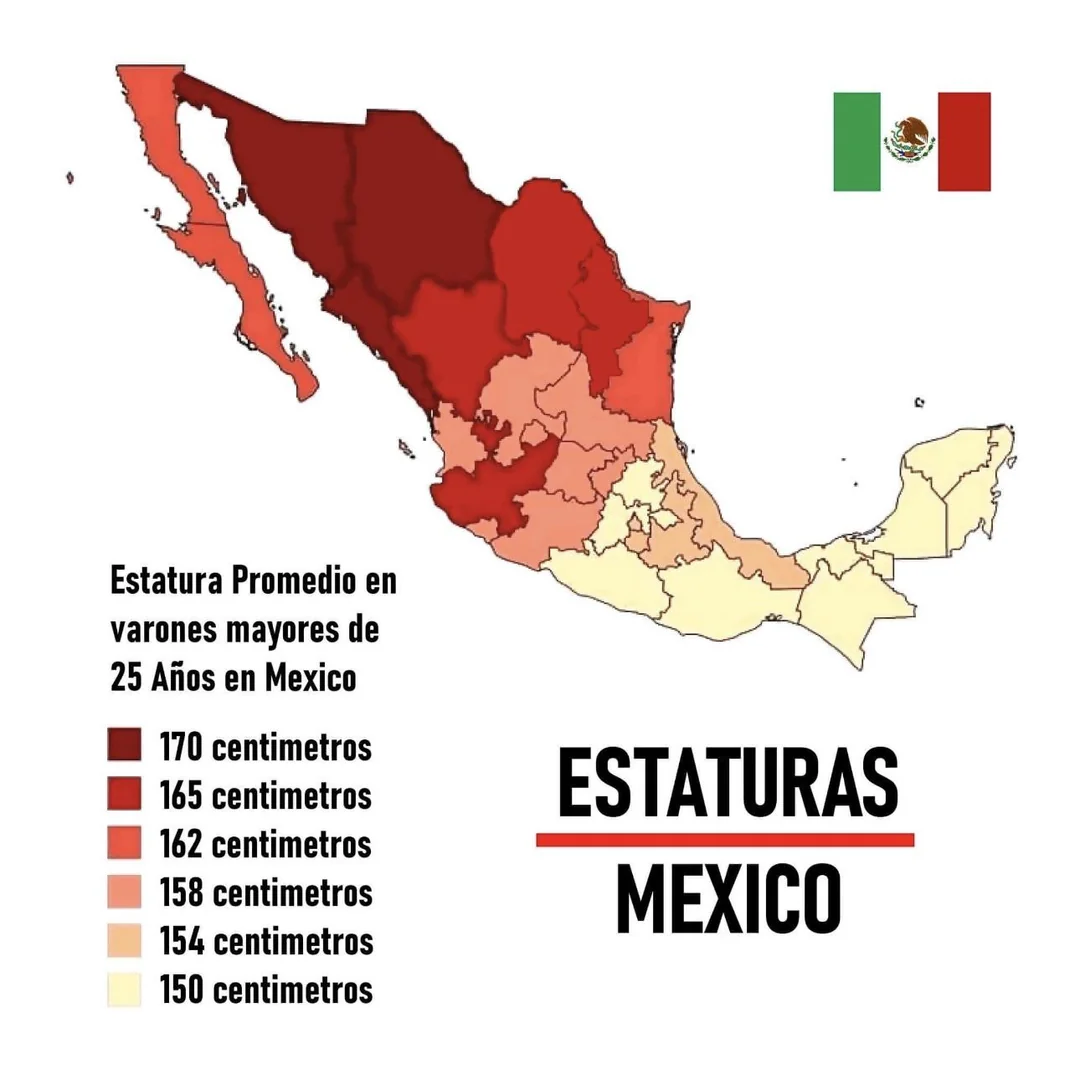
Understanding the average height in Mexico provides valuable insights into the nation’s nutrition, healthcare access, and overall well-being. Height is not only a genetic attribute but also a reflection of childhood development, public health initiatives, and living conditions. For this reason, measuring average height helps researchers and policymakers assess population health over time.In Mexico, factors such as economic disparities, regional diets, and access to medical care all play a role in determining how tall people grow. By examining how height varies between men and women, as well as among different areas of the country, we gain a clearer picture of national health progress. This article explores these patterns in depth and compares them with global benchmarks.
Table of Contents
ToggleAverage Male Height in Mexico
The average height for men in Mexico is approximately 170 cm (5 feet 7 inches). While this is lower than the global male average, it is fairly consistent with other Latin American countries. Mexican men’s height has shown gradual improvement in recent decades, reflecting enhanced nutrition, better healthcare, and greater awareness of physical development during childhood.Urban environments often report slightly taller male populations compared to rural areas. This can be attributed to better access to a balanced diet, medical services, and improved living conditions. However, economic inequality continues to affect height outcomes, especially in underserved communities. Still, the national average for males has continued to rise steadily with each new generation.Average Female Height in Mexico
The average height for women in Mexico stands at around 158 cm (5 feet 2 inches). This measurement places Mexican women slightly below the global average but well within the typical range for women in Latin America. Like their male counterparts, Mexican women have experienced height increases over recent years due to health and nutritional advancements.Access to prenatal care, fortified foods, and childhood vaccinations have all contributed to improved female growth patterns. Younger generations of women in Mexico are now taller than those from previous decades, a clear sign of progress. While some regional disparities remain, nationwide efforts to support maternal and child health are helping close the gap.Factors Influencing Height in Mexico
Multiple elements shape the average height in Mexico, and understanding these is essential for interpreting height statistics accurately. Genetics certainly play a role, but environmental factors such as diet, income level, and healthcare quality are equally influential. Mexican children who receive balanced nutrition and regular medical attention are more likely to achieve their full height potential.Education is another critical factor. Families with higher levels of education tend to prioritize healthy eating and preventative healthcare. On the other hand, regions with higher poverty rates often report stunted growth due to limited access to fresh food and healthcare services. Ongoing national initiatives focus on reducing these health inequalities through improved access to public services and nutrition programs.How Mexico Compares to Other Countries
When analyzing the average height in Mexico, it’s useful to compare it with global data to see where the country stands. For instance, countries like the Netherlands and Germany report significantly taller averages, while Mexico’s figures are closer to those of other Latin American nations. Differences in genetics, nutrition, and healthcare systems account for much of this variation.One notable comparison is with the United States. The average height in USA tends to be higher than in Mexico, largely due to differences in early childhood nutrition and access to healthcare. For more information on this topic, you can visit our dedicated article on average height in USA, which breaks down the statistics for both men and women in the United States.Regional Height Differences Within Mexico
Significant regional variations also exist in the average height in Mexico. Urban areas like Mexico City, Monterrey, and Guadalajara generally report taller populations due to better socioeconomic conditions and more consistent access to healthcare and nutrition. Residents in these regions benefit from improved infrastructure, education, and living standards.In contrast, rural areas and southern states such as Oaxaca or Chiapas often record shorter average heights. These differences are typically linked to historical inequalities, lower income levels, and limited access to healthcare facilities. Recognizing these regional trends is crucial for public health efforts, as targeted interventions can help bridge the gap and promote healthier development across the entire country.
Op. Dr. Halil Buldu
Orthopedic Surgeon and specialist in Limb Lengthening & Deformity Correction with over 14 years of experiences
Author Page


